Open fractures are surgical emergencies because of its complications (soft tissue damage, infection, hemorrhage).
We at emergency department need a classification system that it is intented to determine the degree of that damage.
We have to make a rapid (also a good) interrogation of lession mechanisms (what, when, where, who, associated lessions). REMEMBER: If a low-grade open fracture has 6hrs from the begining, it’s considered infected.
On 1984, Gustilo and Anderson made a classification system, wich is the following:
Type I open fracture. Wound less than 1 cm, without contamination and minimal injury of soft tissue.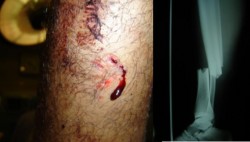
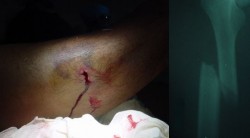
Type II open fracture. Wound between 1 and 10 cm, mild contamination, extensive soft tissue damage and minimal to moderate crushing component.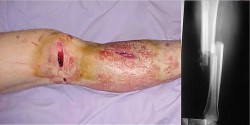

Type III-A open fracture. Wound larger than 10 cm, severe contamination and severe crushing component.

Type III-B open fracture. Wound larger than 10 cm, severe contamination and severe loss of tissues.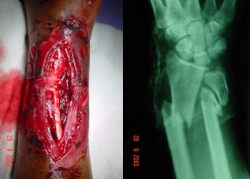

Type III-C open fracture. Wound larger than 10 cm, severe contamination and neurovascular injury.
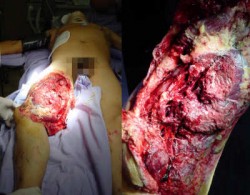

REFERENCES:
Gustilo, R.; Mendoza, R.; Williams, D. Problemsin the management of type III (severe) open fractures: A new classification of typeIII open fractures. J Trauma 24:742, 1984.
Regards,
Jon Mikel Iñarritu, M.D.
technorati tags: open fractures, open fracture, fracturas abiertas, fracturas expuestas, fracture, Gustilo, medicine, unbounded medicine, orthopedics, trauma, emergency, surgical emergency, medicina, medical images
this website is interesting
hi i will using this post as one of the posts for the inaugural edition of “Surgexperiences” at http://surgexperiences.wordpress.com
would be great if u include management options for the different classes of open #s.
thanks.
can you please send me a protocol generally used in accident and emergency department for the management of open fractures.
thanks
this is not approval in this shight